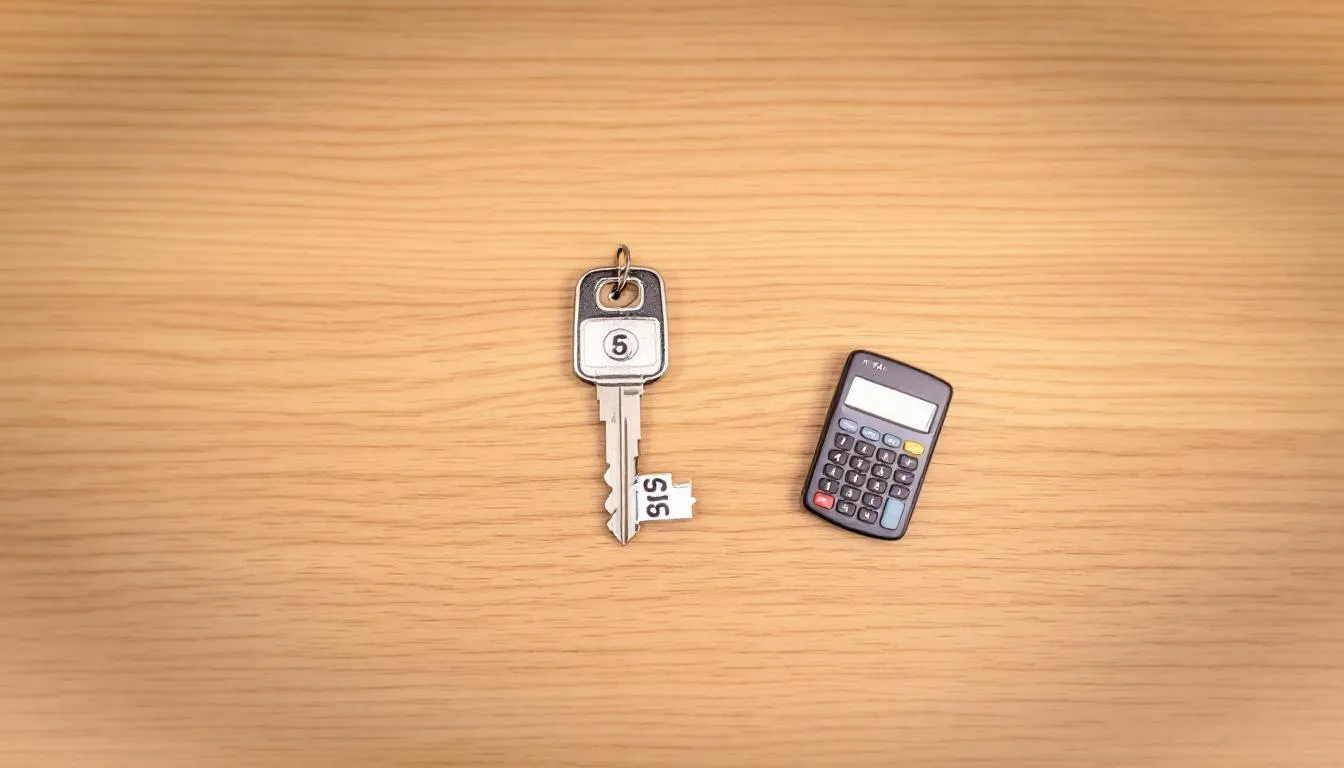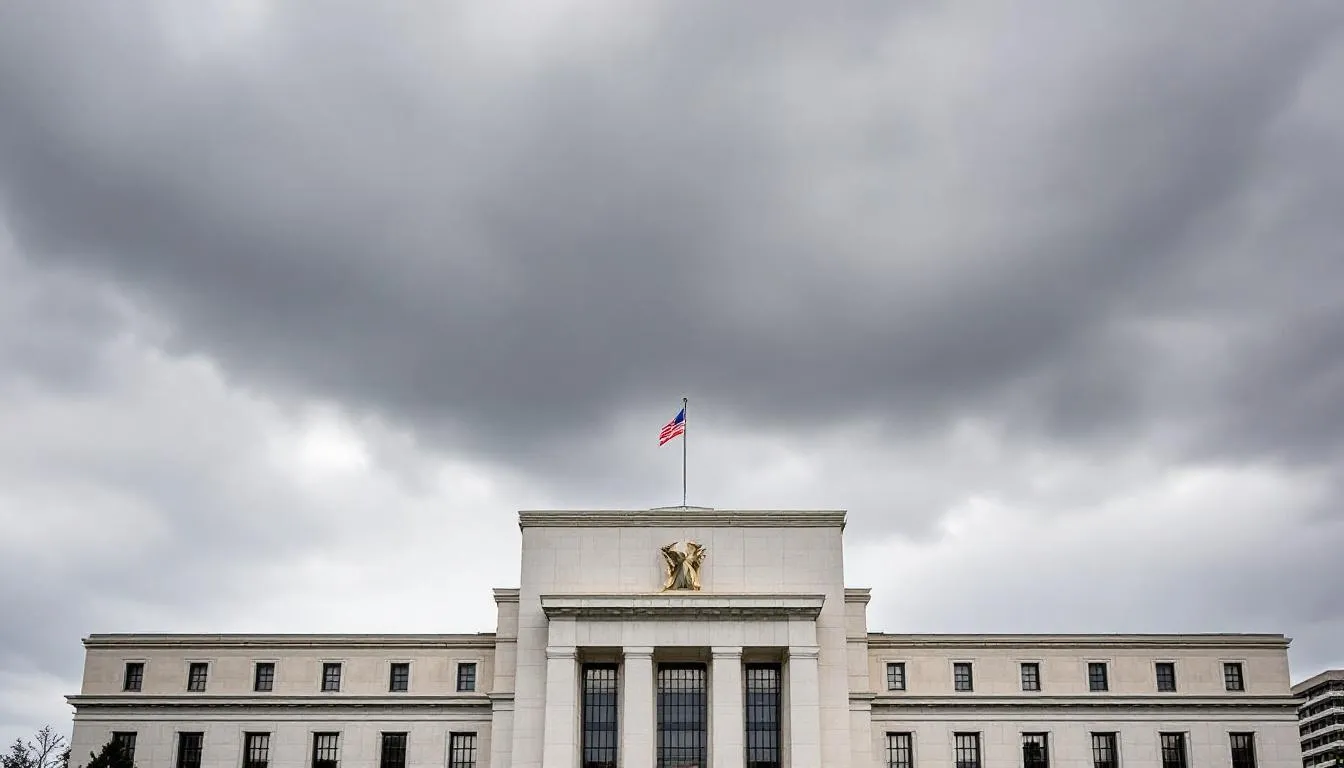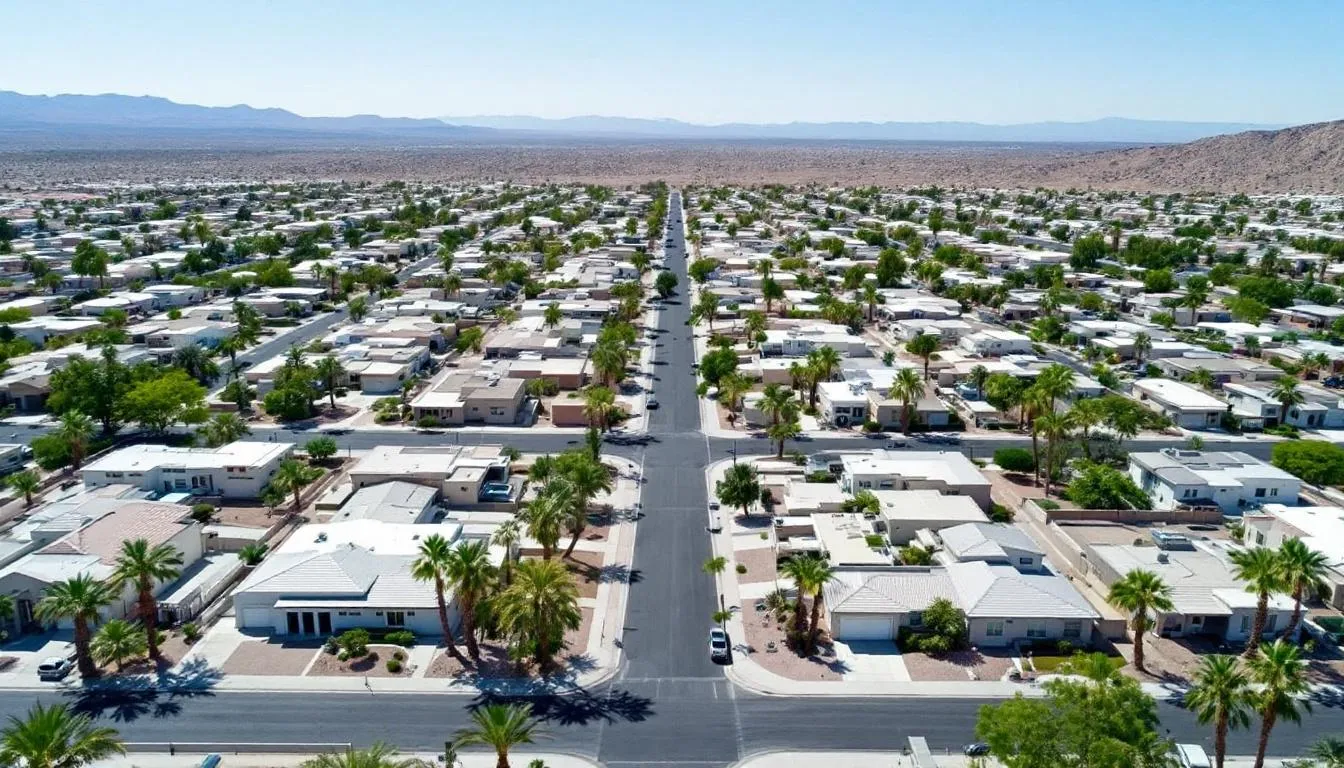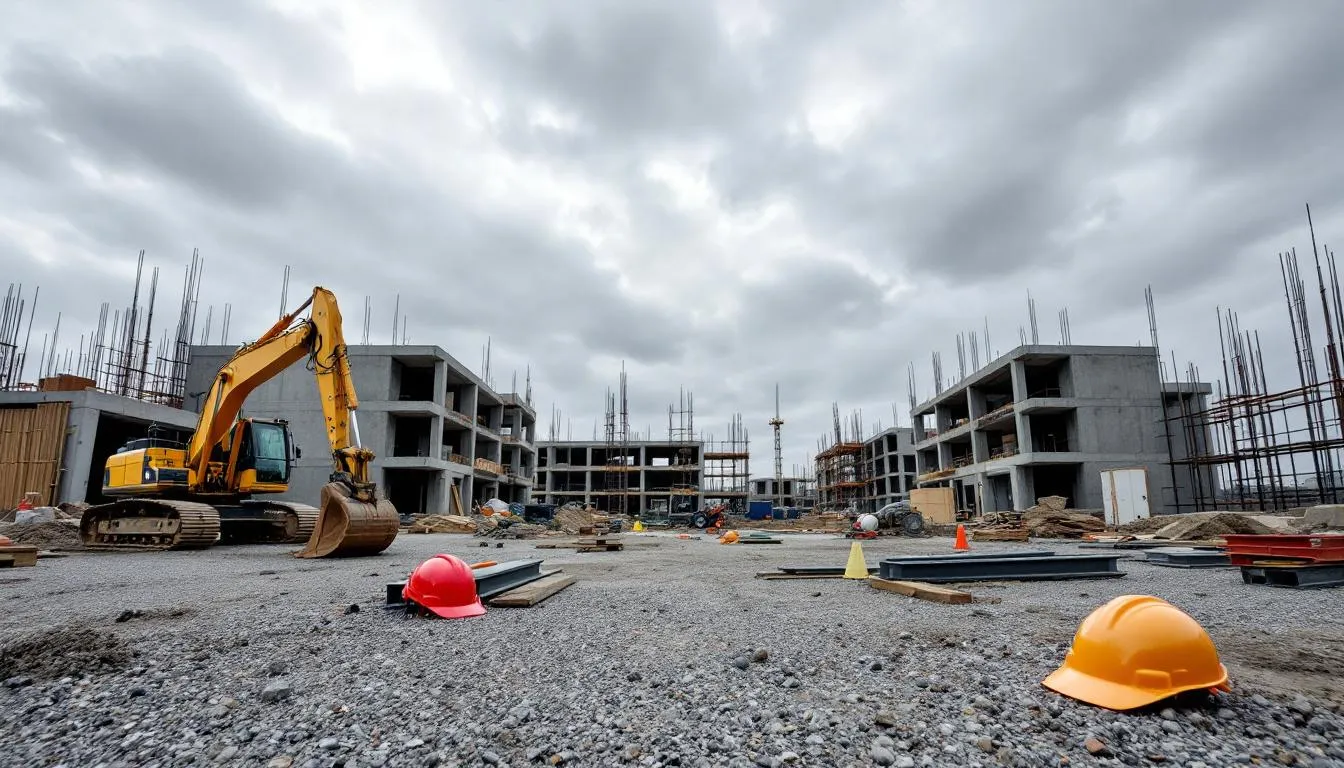- 🧠 Interest rates have historically been one of the strongest triggers of housing cycle shifts.
- 💰 Lower mortgage rates increase affordability and buyer demand, especially among first-time buyers.
- ⚠️ Tight inventory and seller hesitance could delay or distort a full market rebound.
- 📉 Inflation easing to 3.7% could spur the Federal Reserve to begin interest rate cuts.
- 🏙️ Las Vegas, due to its economic sensitivity, may lead the nation into the next housing cycle.

The Housing Market in Flux
The U.S. housing market is at a turning point. Years of fast price increases—because of very low interest rates—stopped when the Federal Reserve raised rates sharply to slow inflation. And now, with rate cuts likely soon and key inflation numbers going down, people are talking more about a new housing cycle starting. Everyone is watching interest rates, affordability, and how buyers feel. Active markets like Las Vegas may show what will happen in the rest of the country.

Understanding the Housing Cycle
The housing cycle is how real estate markets naturally move through phases. It is mainly affected by big economic factors like employment, interest rates, and how consumers feel. Knowing about this cycle can help buyers, sellers, and investors make smart choices, instead of just going by feelings or market rumors.
The Four Stages of a Housing Cycle
Boom
During the boom phase, home prices go up fast because of strong demand, low mortgage rates, and little supply. This is often when buyers compete more, which leads to bidding wars. Consumers usually feel good about the economy, and people investing to make quick money buy more.Slowdown
As prices get too high to afford or interest rates go up, things start to slow down. Home sales drop, fewer people apply for mortgages, and builders start fewer new homes. More homes become available as they take longer to sell.Correction
In this stage, prices stay steady or fall a bit. Sellers change their expectations, and there are more homes for sale. This phase can often make buyers hesitate as the market tries to balance price and demand. If outside economic problems get worse, a correction can become a big drop.Recovery
Market conditions stop falling and become steady. New buyers come in—often because interest rates fall or economic forecasts get better. Homes become more affordable, and buyers who had been waiting come back to the market. Things become more balanced, setting the stage for the next boom phase.
Knowing where we are in this cycle is key. Experts and past data suggest the market may be leaving its correction phase and moving to recovery, if the government eases its money rules in the coming months.

Role of Interest Rates in the Housing Market
Interest rates are likely the most important thing affecting real estate trends, especially in countries that rely on mortgages, like the U.S. Even a small change in the rate can have very big effects throughout the housing cycle.
How Interest Rates Affect Real Estate
Affordability
When interest rates fall, mortgage payments go down. This lets people either pay less each month or afford more expensive homes. A drop from 7.5% to 6.5% on a typical 30-year mortgage could let a buyer afford tens of thousands of dollars more.How People Feel
Beyond the numbers, lower rates make consumers feel better. Buyers feel good about buying before rates go back up. And sellers expect more buyers.Buying and Selling Ease
More affordable debt makes it easier to buy and sell homes. Homeowners who were "stuck with their low rates" during high-rate times may now sell, which means more homes for sale.What Investors Do
Real estate becomes more appealing than stocks or bonds when returns on other investments fall. Investors looking for steady income often buy rental properties in such situations.
Historical Precedents
- In the aftermath of the 2008 financial crisis, the Fed’s decision to keep interest rates near zero helped fuel a slow but steady real estate rebound.
- During the COVID-19 pandemic, record-low mortgage rates below 3% drove a buying frenzy, further inflating home prices across the country.
In each case, rate direction was very important for how people felt about the market and how many homes sold. As rates now seem ready to fall, a similar situation could happen.

Stephanie Link’s Economic Outlook Explained
Stephanie Link, Chief Investment Strategist at Hightower, has said she thinks we are about to start a new housing cycle. In a CNBC interview, she stated that if interest rates "continue to come down," it could start new housing activity (CNBC, 2024).
Why Her View Matters
Stephanie Link is known for her way of looking at data that combines big economic trends and specific industry details. Her positive view is based on:
- Inflation trends getting milder. This makes the Fed less likely to raise rates again.
- Wage growth slowing. This helps the Fed's goal to lower inflation.
- Better affordability numbers. This shows more homes could be bought and sold.
These elements together suggest a good situation for new buying activity—especially in markets that had seen very high prices or big corrections.

The Data: Where Are Interest Rates Headed?
Where interest rates go depends on where inflation is going, how healthy the job market is, and what consumers are spending. And as of late 2025, these numbers are moving toward easier money policies.
Key Economic Numbers
- Inflation: According to the U.S. Bureau of Labor Statistics, inflation has gone down to 3.7% year-over-year. This is a big drop from 2022's peak of over 9% (BLS, 2024).
- Unemployment: The jobless rate is 3.8%. This means a healthy but slightly less tight job market. This may not need strict money policies to slow it down.
- GDP Growth: Growth each quarter is moderate. It shows demand is holding up without causing too much inflation.
Rate Forecasts from Major Institutions
Goldman Sachs, JP Morgan, and Barclays now predict possible rate cuts in late 2025 to early 2026. The CME FedWatch Tool shows a growing chance (>60%) of a 0.25% rate cut in Q4 2025.
If these cuts happen, mortgage markets will react quickly. Some guesses say the 30-year fixed-rate loan could be around 6% by early 2025. This is lower than current levels above 7%.

Impact of Rate Drops on Buyer Behavior
Lower rates do not just let buyers afford more. They bring new life into what may have felt like a slow market.
How Buyers Feel and Market Reacts
- New Optimism: Lower monthly payments make buyers feel they need to act fast and compete more, especially in hot markets.
- Qualifying for Loans: Buyers on the edge who could not get loans before can now qualify. This makes more people able to buy.
- Bidding Wars Return: Few homes for sale and more demand often start bidding wars, mainly for homes in good areas and ready to move into.
How Rates Affect Different Buyers
- First-Time Homebuyers: This group is usually most affected by rate changes. They can afford the most extra when rates fall.
- Move-Up Buyers: Smaller differences in mortgage rates make it easier to buy bigger homes.
- Real Estate Investors: As rates fall, returns on investments get better. Many investors use this time to add to their properties or get new loans for them.

Impact on Sellers and Existing Homeowners
Just as falling interest rates give new life to buyers, they can also get sellers who have been waiting moving again.
People Feel Less "Stuck" with Low Rates
Many homeowners felt "trapped" by their existing low-rate mortgages—why sell and take on a higher rate? But now, as new loan rates begin falling, the difference in rates becomes okay again.
- More Homes for Sale: Sellers who delayed plans when rates went up may come back to the market. This makes it easier to find homes.
- Buying Bigger Homes Gets Easier: With rates going down, homeowners with a lot of home equity may buy bigger homes or homes in places they have always wanted.
- Refinancing Benefits: Falling rates usually cause many people to refinance. This gives existing homeowners more money to spend or put back into their homes.

Market Timing: Is This the Reignition Las Vegas Has Waited For?
Las Vegas works differently than many markets because its economy is based on entertainment, tourism, and people moving there.
What Makes Vegas Different?
- Big Price Swings: Vegas sees bigger price changes than the national average, so housing cycles are stronger there.
- Demand from People Moving In: People moving from California, Arizona, and Texas create demand, even if local jobs are not great.
- What Investors Do: Different from factory cities, Las Vegas has many cash buyers, house flippers, and investors from other states. They react fast to rate changes.
Current Las Vegas Market Trends
- Few Homes for Sale: Little new home building and sellers not wanting to sell mean there are few homes for sale.
- Buyers Are Ready: Agents say that buyer interest goes up a lot each time rates fall, even for a short time.
- People Keep Moving In: Nevada still sees more people moving in than out. This keeps basic demand strong.

Investor Intel: Opportunities and Risks in a New Cycle
Real estate investors often find big chances when the housing cycle changes. But timing and careful research are very important.
Smart Ways to Invest
- Value Investing: Look for neighborhoods with lower prices than they should be. They should still be close to jobs or public transport.
- Buy and Hold: Expect prices to go up over time in markets like Las Vegas, which has steady numbers of people moving in.
- Short-Term Rental Types: With tourism coming back strong, Airbnb-type investments near the Strip or Red Rock region still make good money.
Risks to Handle
- Sudden Rate Changes: A sudden change in Fed policy could hurt price forecasts.
- Renter Risk: As more people move from renting to buying, some rental properties could see more empty units.
- Rule Problems: Nevada has talked about more rules for investors and property taxes. Keep up with the news.

What Could Prevent a Housing Cycle from Forming?
Even with optimism, some unknowns could stop or greatly slow down the next cycle.
Things to Watch For
- Stubborn Inflation: If prices stop falling or go back up, the Fed may go back to strict money policies.
- World Events: Wars, problems with supply chains, or money crises could make even the best predictions useless.
- Tighter Lending: Even with lower rates, banks may lend less because they fear a recession or people not paying back loans.
- Buyers Hold Back: Many consumers are still careful after seeing or going through sudden drops in what they can afford.
Even when things seem to get better, people's trust is easily broken. Just one bad number can make buyers and banks pull back.

Getting Ready: Smart Advice from Steve Hawks
Steve Hawks, a well-known Las Vegas real estate expert, offers practical advice from someone who works in the business.
Main Tips
- Buyers: Get your loan pre-approval ready. Watch for changes related to rates in your chosen neighborhoods, like Downtown Summerlin or Inspirada.
- Sellers: Do not wait for the "peak." Aim for the best time when demand comes back but there are not too many other sellers.
- Investors: Look for opportunity zones and neighborhoods getting money for roads and buildings, and where jobs are growing (e.g., near Allegiant Stadium or UNLV expansions).
Success in the market goes to those who are ready and act.

Real Estate Technology’s Role in the New Cycle
Today's real estate tech tools are not just nice-to-haves. They are key parts of how people buy and sell real estate today.
Tech Helps Things Move
- AI for Listings: Automatic alerts tell clients about new homes for sale right away. This is faster than ever.
- Learning Models: Platforms like Zillow's Zestimate are changing into models that guess future prices, not just current home values.
- Online Closings: Escrow and title work has moved online. This makes closings faster and less likely to fall through.
Markets like Las Vegas, with many homes bought and sold, will benefit most from these new tools. This will make cycles move faster than they used to.
What Happens Next: Timing the Vegas Market
Las Vegas is often an early sign. Its first reactions can show what will happen across the country.
- When Things Might Happen: Las Vegas could start a clear time of housing growth as early as Q1 2026.
- Key Things to Watch: Watching how many homes are for sale, job openings, and how many people apply for mortgages can show if this is happening early.
Work with local experts like Steve Hawks to keep up with what is happening now, not just quarterly predictions.
Final Thoughts: Moving Through a Changing Housing Market
The housing cycle appears ready to improve, waiting for a sure drop in interest rates and a steady, balanced economy. Inflation has gone down a bit, the job market is evening out, and mortgage rate forecasts offer hope. Together, these changes could start a strong housing comeback—especially where the market's basic strengths are still there, like Las Vegas.
Whether you're buying, selling, or investing, the smart thing to do now is get ready. Talk to lenders, watch important signs, and trust local experts. As Steve Hawks reminds us, “This isn’t about luck—it’s about timing, preparation, and knowing when to act.”
Citations
- CNBC. (2024). Stephanie Link discusses housing cycle outlook amid interest rate shifts.
- Freddie Mac. (2024). Primary Mortgage Market Survey.
- U.S. Bureau of Labor Statistics. (2024). Unemployment rate data.
- U.S. Bureau of Labor Statistics. (2024). Consumer Price Index report.
Thinking about your next move? Whether you're investing, buying, or selling, now may be the time for a talk about your plans. Connect with local expert Steve Hawks and be ready before others.

